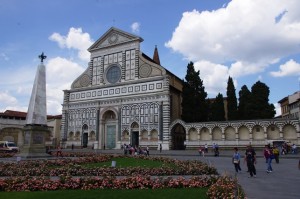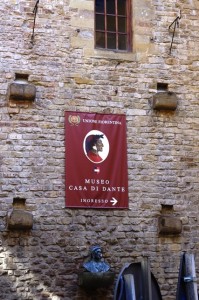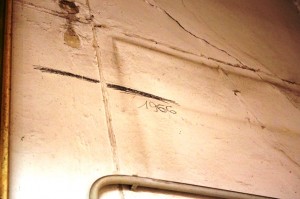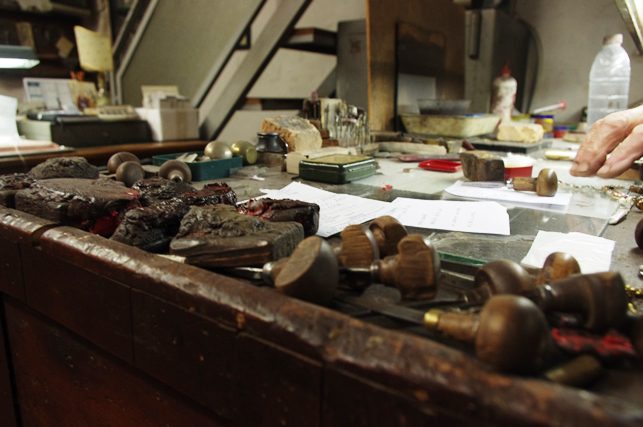 In the spring of 1348, ten young Florentines gathered in the Piazza of Santa Maria Novella to plan their escape from the city. Florence was caught in the grip of The Black Death, and so they thought ten days spent in the verdant hills outside of town would be a good way to pass the time while the plague had its way with their fellow citizens. There would be tales of tragedy, trickery, and eroticism, along with plenty of teasing and flirting. The little stories that these fictional characters told each other became the collection known as “Decameron,” by Giovanni Boccaccio, a classic of Italian literature.
In the spring of 1348, ten young Florentines gathered in the Piazza of Santa Maria Novella to plan their escape from the city. Florence was caught in the grip of The Black Death, and so they thought ten days spent in the verdant hills outside of town would be a good way to pass the time while the plague had its way with their fellow citizens. There would be tales of tragedy, trickery, and eroticism, along with plenty of teasing and flirting. The little stories that these fictional characters told each other became the collection known as “Decameron,” by Giovanni Boccaccio, a classic of Italian literature.
Fast forward to the spring of 2014 and I’m sitting in the very same square, waiting to meet my friend and tour guide, Elena. She is going to lead me on a walking tour of her native city and show me some of the highlights, including those connected to classic Italian literature, of which I have a particular interest. Back in Florida, I have a degree in Italian Studies awaiting just two more courses to complete my diploma. The class in Medieval and Renaissance literature was my favorite to date, and so I was anxious to visit the actual sites where literary history took place in Florence.
On her website, Florence with a Flair, Elena offers many specialized tours, including a visit to Dante’s neighborhood. If you’re not into Dante the way I am, she also offers artisan tours, garden tours, food tours, wine tours, and of course the more standard itineraries which include the top sites and museums. Florence is compact, but there’s A LOT to see, so a good tour guide is essential to make the most of your visit to la culla del Rinascimento, the Cradle of the Renaissance.
Italian Literature in Florence
Our first stop in Dante’s neighborhood was the Chiesa di Santa Margherita de’ Cerchi where Dante first encountered Beatrice, the woman who would become his life-long muse. The church is remarkable for its small size and historical significance, but otherwise there isn’t much to see or do here except channel your inner Poet and find inspiration from the walls themselves.
Dante is, of course, the best known figure in classic Italian literature, but he wasn’t its creator. In fact, Italian literature didn’t even start in Tuscany—it started in Sicily during the reign of Federico II during the first half of the 1200’s. Federico himself was quite a poet, speaking six languages (Latin, Sicilian, German, French, Greek and Arabic) and promoting the popular style of literature among his noble class, which was a Sicilian take on the provençal style. They wrote for pleasure, to entertain themselv es, engaging in competitions to see who could pen the most obscure, artistic love poems.
es, engaging in competitions to see who could pen the most obscure, artistic love poems.
It was a Tuscan merchant from Lucca, Bonagiunta Orbicciani, who brought some manuscripts from Sicily to Tuscany, which marks the beginning of the Tuscan School of Italian literature in the second half of the 1200’s. These new literary works were still love poems, like the Sicilian School, but were more direct and literal, and of course incorporated the Tuscan language of the day.
The final evolution, where we at last meet up our friend Dante, was called “Il Dolce Stil Novo,” or The Sweet New Style of writing. This group of writers held fast to their beliefs that love and a gentle heart is what brings a man closer to the Divine. It does NOT depend on noble lineage. This was key, because it was Dante who brought literature to the masses by writing his masterpiece, The Divine Comedy, in the vulgar dialect of the people instead of Latin.
Just around the corner from Beatrice’s Church is the Museum of Dante’s House. Well, sort of. According to the best documents, this is the street address where Dante was born. However the current building is only 100 years old. Still, for only 4€ it’s worth an hour’s visit for anyone interested in Dante and the history of Italian literature.
Gold artisans
The last stop on our tour was the workshop of a traditional goldsmith, who, unlike those high-priced hucksters on the Ponte Vecchio, is still more interested in his art than his “business.” Elena introduced me to Paolo, who is technically retired, but loves his craft so much that he still works a few days a week at Nerdi Orafi on the ground floor of Casa Artigiana dell Orafo. He’s an artisan in the truest sense of the word. I’m not sure exactly how old he is, but he shows you his studio and his tools with the enthusiasm of a child showing you their Christmas toys. He demonstrated some of his techniques for me, such as carving a mold out of a squid bone and creating wax models of intricate pieces of jewelry.
The experience evoked my days as a young dental student in Chicago when we used our own hands to sculpt tiny objects out of wax, and then cast them in gold the very same way as my new friend in Florence. In fact, I once made a gold ring for my mother using the exact technique as Paolo uses. He then introduced me to an even older method when the spring-loaded casting arm was preceded by a device similar to a sling, where the molten metal was spun around by a cord, using the centrifugal force to shoot the liquid gold into the void left by the melted wax.

The studio isn’t so easy to find, tucked into an alley near the river and within shouting distance from the tourists on Ponte Vecchio who are overpaying for their gold souvenirs. This location was ground zero for the 1966 flood that buried Florence in mud and destroyed many of its artistic treasures. On the wall of their shop, there is a mark to represent the high water line from that dreadful day. The goldsmiths, however, are still there. Go see them at work if you’re in the area.
When visiting Florence it can be tempting to just head to the main sites, especially when buzzing through town on a tour de force. Incredibly, some people nowadays even consider Florence as a day trip from Rome. What a shame. There’s so much to see in this Renaissance city beyond the Uffizi and David. Michelangelo has been dead for over 450 years, but there are many talented artists still at work in Florence, keeping the spirit of the Renaissance alive today. The museums are incredible, but this is the real experience. Slow down and check it out for yourself.


Thank you for telling me about Elena. This post is much of my interest. Italy and Books <3 Btw Decameron is a great book..
Yes, me too!!
Another incredibly informative blog Rick…thanks! We rented an apartment to the right of the Piazza Santa Maria Novella for a few days, have been in Florence on a number of visits and now know that there is not a hope in hell of even scratching the surface. We wander around a lot between visits to sites which we love to do, go into shops and markets, eat, drink and watch the world go by. Yes, everyone is amazed by “David” and we were impressed too but for us the unfinished sculptures of Michelangelo in the Galleria were just amazing, just amazing! A day trip from Rome…they must have rocks in their little heads…we took a bus from Panzano (a short distance away) and there were only a few hours to do things, geesh! Enjoyed reading about your Sicilian summer!
Thanks Phyllis!! I, too, love the “prisoners” at the Accademia. Not as famous as David, but provides some insight into Michelangelo’s process. Ciao!
Great to discover your blog. I live in Tuscany, am a writer too and you may wish to follow my fun blog at http://www.junefinnigan.wordpress.com
ciao June
Another good read by the “Maestro-in-waiting.” BRAVO!
GRAZIE!!
Again a post I could relate to at least in part and enjoy in whole! I have done the Dante tour with another tour company and thoroughly enjoyed it. And I have to brag just a bit. I also have read and enjoyed “The Divine Comedy.” And my English teacher breakfast friends even said “Why?” I guess because I wanted to and could. Used a gift card to buy the John Ciardi translation with almost more notes than poetry. But reading a couple of cantos a day and all their notes for me was fun though it certainly took a while. Ah retirement time!
The tour took in church, museum and a couple of other sites. We then, 4 of us, had hot chocolate and took turns reading aloud (in English) the Paolo and Francesca canto. (I hope I got the names right). We finished the tour watching Robert Begnini (sp?) read that canto on the guide’s iPad.
Of course, once again, thanks to you I have had to add another possible tour site to my list of Florence Favorites to check out.
Wow, that’s GREAT, Joan! Yes, you got the names right, and yes, the Benigni DVDs are great for capturing the emotion of the poem, even if your 15th century Italian isn’t perfect. I applaud you because it’s a lot of work to read the entire poem, even in translation. At the university, we spent an entire semester under the guidance of a professor to dissect it, and still left A LOT untouched. Brava!!
Great post as usual, having my coffee and drooling! My daughter studied in Florence for one year in 1989 we rented an apartment and I quit my job and stayed for three months, it was much different then, no computers or I phones etc I am so glad I got to experience the Florence of that era we still return but it is so different.
Thanks for sharing
Thanks for stopping by, Maxine!
Yet another great post Rick, well done! I just wish I had found/known of your blog prior to my two week visit to Italy in April. A return is a must, and sooner rather than later!
Thanks so much, Tony! I hope you make it back to Italia soon!